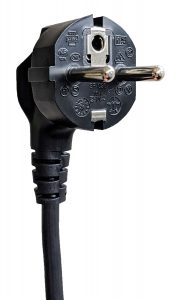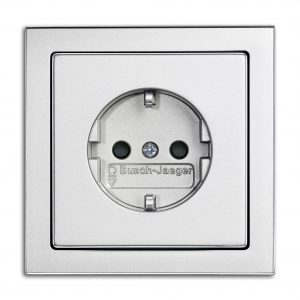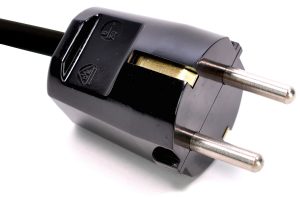TYPE F


Type F is used, for instance, in Germany, Austria, the Netherlands, Sweden, Finland, Norway, Portugal, Spain and Eastern Europe. (Click here for the full list of all countries that use type F)
Plug F is commonly called “Schuko plug”, which is the acronym of “Schutzkontakt”, a German word meaning “protection contact” or “safety contact”. The plug was designed by Albert Büttner, a German manufacturer of electrical accessories. It was further perfected by Siemens engineer Wilhelm Klement and a patent was filed in 1929. The decision in 1930 by RWE, one of Germany’s largest electricity suppliers, to require that all of their customers have type F sockets installed enormously boosted the spread of the Siemens plug and socket system.
Type F is similar to C except that it is round and has the addition of top and bottom indentations with conductive clips in them in order to earth the appliance. The plug is not perfectly round, but has a pair of plastic notches on the left and right side to provide extra stability when using large and heavy plugs (e.g. with built-in transformers).




